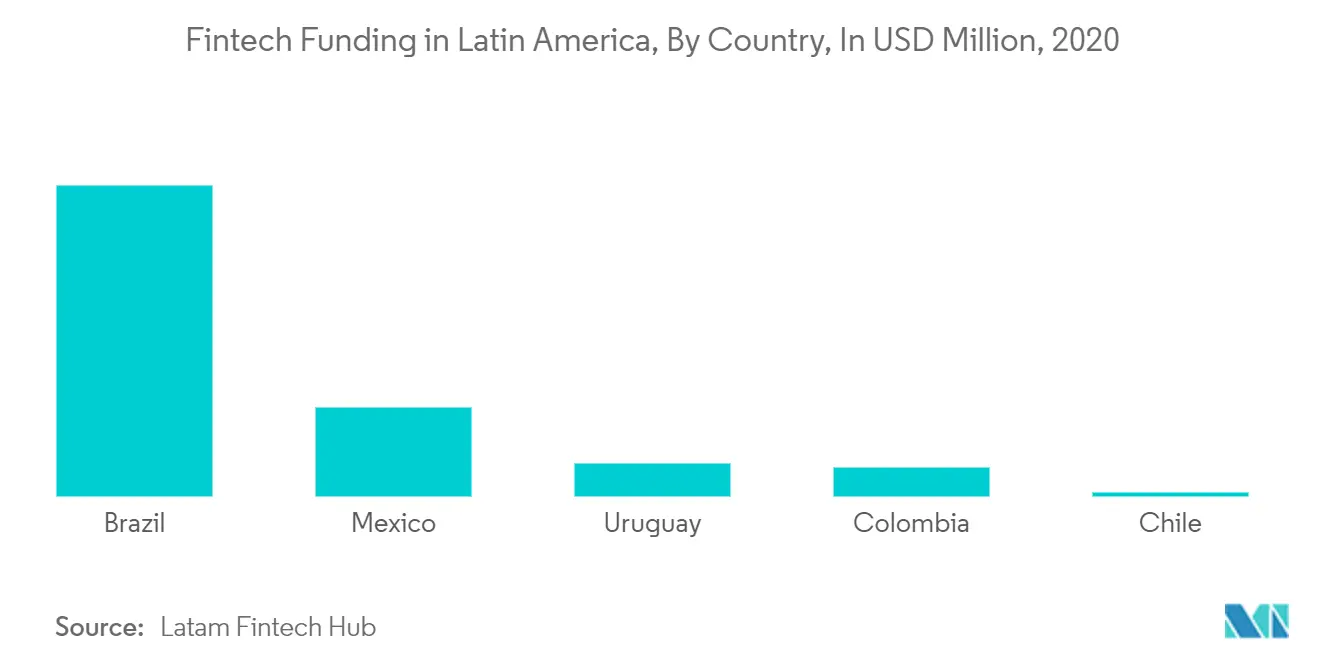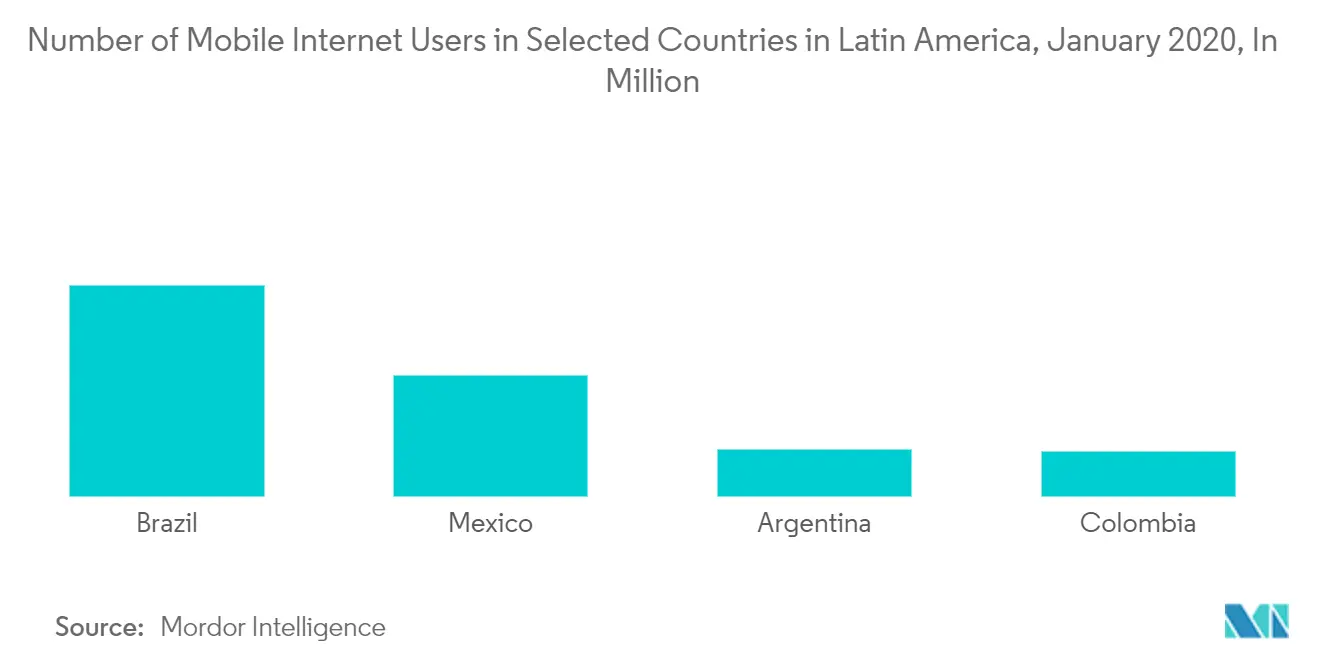Market Trends of Latin America Fintech Industry
This section covers the major market trends shaping the Latin America Fintech Market according to our research experts:
Brazil and Mexico, are Dominating the Market
Brazil, by far Latin America's most populous country, has a close to 70% internet penetration rate, compared to around 87% in Western Europe and the United States. With over 750 companies, Brazil is the largest fintech market. With 440 companies operating, Mexico has the second largest and most established financial ecosystem in Latin America.
The introduction of the regulatory sandbox, open banking regulations, and the launch of Pix, Brazil's rapid payment system, have all contributed to the growth of the indigenous fintech sector. A breakdown of fintech investment in the region reveals that investors are particularly optimistic about the prospects of the Brazilian industry, with statistics from Colombian platform Latin America Fintech Hub revealing that Brazilian companies received more than 66% of fintech funding in 2020.
According to Bruno Diniz, managing partner of fintech-focused consultancy Spiralem and one of Brazil's most important fintech specialists, more innovation and developments are predicted in the future, particularly in the fields of insurtech and open banking. Several significant, established Brazilian fintech companies are expected to go public in 2021.
With the enactment of the Fintech Law in 2018, Mexico became the first Latin American country to establish a dedicated fintech legal framework. The legislation governs two categories of fintech: crowdfunding institutions and electronic money and payment institutions, as well as for cryptocurrencies, open banking, and a regulatory sandbox.
According to data from the National Banking and Securities Commission, 93 fintech companies were in the process of gaining a Financial Technology Institution (FTI) license as of early 2021, indicating substantial interest from the startup community.
Mexico, like Brazil and other emerging economies, has a significant young and tech-savvy population that is underserved by traditional banking and financial services and willing to adopt new, digital-first financial products and services. The favourable regulatory environment and good demographics have created a great basis for fintech startups to prosper.

Massive Technological Adaption is Boosting the Market
Latin America is home to a population of roughly 450 million mobile phone users, which is expected to reach 484 million by 2025. Of these 450 million users, nearly 80% access the internet via their phone - a proportion that is forecasted to reach 87% by 2025. Better telecommunication infrastructures and increasing internet access will be responsible for driving step-function growth across the entire region for fintech. These massive technological shifts have been a boon for fintech startups to build fully digital products and services and pass cost savings through to customers.
Banking regulators and central banks in the region are bending over backwards to embrace new financial technologies. Internet availability has increased upward mobility and increased access to international high-level degree programs. Both factors have created a rising, highly educated middle class that has become the founders of many of the regional FinTech startups.
An increase in the number of mobile phone users also means that there will be an increase in mobile payment options too. For an instance, QR code payments are slowly gaining popularity in the Latin American region. The scenario of rising e-invoicing is interesting because despite Latin America being behind in the digital payment rates, it is emerging as a global leader in e-invoicing. This signifies that the region is experiencing a FinTech boom, and it will cause a trickle-down effect that will encourage people to adopt digital payments fully.
Brazil contributes around 42% when it comes to Latin America's B2C retail transactions. Furthermore, the retail scene is expected to grow by around 39%. Mobile wallets enable users to make automated purchases. Digital payments are on the verge of a boom in the Latin American region due to the rise of neo-banks, e-wallets, e-invoicing, etc. The increased demand for digital payments from both consumers and businesses is boosting the growth and adoption of digital payment solutions.

